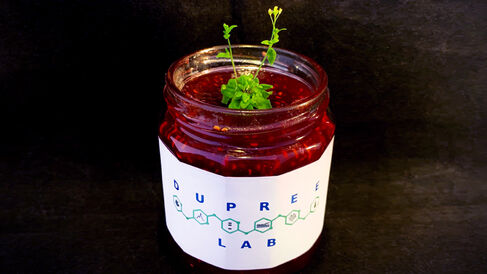
The Dupree Group and their collaborators have identified genes that regulate the properties of pectin, with their mutants causing pectin to gel as jam in the plant cell wall.
Plant biomass accounts for around 80% of the carbon fixed within living organisms on the planet. Most of this carbon is stored in complex polysaccharide molecules surrounding and connecting cells, commonly known as cell walls. Among the family of polysaccharides present in plant cell walls, pectin is an abundant and essential component thought to dictate to a great extent how cells expand and take their shape.
You probably know that pectin is also important in your favourite jam to make it set. The same properties of pectin that make jam set are finely tuned by plants to adjust the firmness of their tissues, influencing the way the plant cells grow and how their fruits ripen. The science of pectin gel formation in the food industry is well studied, but the relevance of jam phenomena to the plant remains largely a mystery. In a new study published in Nature Plants, researchers have discovered genes that control pectin's properties by influencing a process called pectin methylation.
This work performed by the Dupree Group, and their collaborators at the Massachusetts Institute of Technology (USA), Warwick University (UK) and Andrés Bello University (Chile), consists of identifying strong candidates for Golgi S-adenosyl methionine (SAM) transporters in plants. These proteins are responsible for incorporating into the Golgi apparatus the substrate required for methylation reactions, SAM, which is the first step required for pectin methylation. This important gene discovery allowed the researchers to investigate the relevance of appropriate pectin methylation in plants. The team found that mutants in these genes grow very poorly with restricted capacity of cells to expand. Using cutting-edge solid-state nuclear magnetic resonance experiments, the authors could identify the signals that account for gelled pectin, and remarkably the mutant plants displayed most of their pectin gelled as jam. Certainly, forcing plants to go wild producing jam in their cell walls is not something sweet to do to them!
